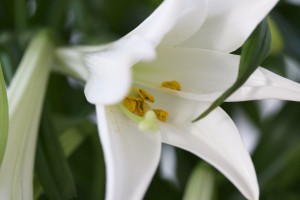Why do Flowers Smell
Scents take a lot of effort to make, but they ensure the next generation.
Flowers have just one biological role: to guarantee pollination. Many showy blooms are pollinated by insects, attracted by a flower’s bright colours and the reward of energy-rich pollen or nectar. But flowers must also lure insects from farther afield – enter, scent.
The aroma of some flowers contains up to 100 different chemicals. These are modified from chemicals in leaves which deter grazing animals, but are manufactured within the flower. Warm weather stimulates their release – just when bugs are most active. Characteristic scents encourage insects to visit other flowers of the same species and so transfer pollen between them.
The blooms of evening primrose and night-scented stock release their sweet aroma in the evening, attracting nocturnal moths. These moths only visit other night-scented flowers, thus reducing pollen wastage. Some species have ‘stinky’ flowers, which only attract carrion-seeking insects. The clove scent of one Bulbophyllum orchid is so particular that it lures just one species of fly, thus ensuring efficient pollen transfer.
Facts about lily
 Stigma – Scent must attract the bug to another flower. Once there the sticky stigma gathers pollen off its back.
Stigma – Scent must attract the bug to another flower. Once there the sticky stigma gathers pollen off its back.
Anther – Anthers dust pollen onto insects’ backs when they brush against them. Anthers and pollen may also produce a distinctive aroma.
Style – If the pollen is from a flower of the same species, it enters a tube down the stalk-like style.
Ovary – The pollen tube reaches the ovary, where it fertilizes a female egg cell to complete pollination.
Petal – Scents are generally secreted from the petals. Sometimes lines of scent guide insects in towards the centre of the bloom.
